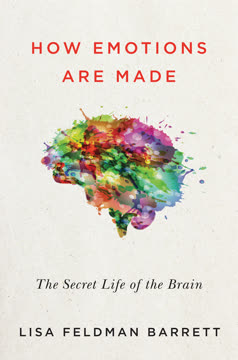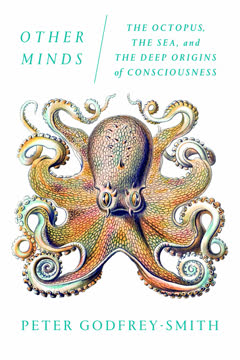Key Takeaways
1. You are a unique combination of atoms with a fascinating cosmic history
Every one of those circa 7 × 1027 atoms has to have come from somewhere.
Cosmic origins. Your body is composed of atoms forged in the hearts of stars and distributed through space by supernovas. These atoms have existed for billions of years, cycling through various forms before becoming part of you. The elements that make up your body include:
- Oxygen (65%)
- Carbon (18%)
- Hydrogen (10%)
- Nitrogen (3%)
- Calcium, phosphorus, and other trace elements
Atomic recycling. The atoms in your body are constantly being replaced, with most of them changing over a ten-year period. This means that the physical you is in a constant state of flux, with atoms that were once part of other organisms, including historical figures, now forming part of your body.
2. Life emerged from complex chemical interactions and energy flows
We can't, of course, be 100 per cent certain just when life did begin.
Origin theories. Scientists have proposed various theories for the origin of life, including:
- Primordial soup and lightning (Miller-Urey experiment)
- Hydrothermal vents on the ocean floor
- Panspermia (life arriving from space)
Energy and complexity. Life requires a way to harness energy and maintain complexity against the tendency towards disorder (entropy). Theories suggest that early life forms may have emerged from self-replicating chemical systems that could capture and use energy from their environment.
Evolutionary development. Once simple life forms emerged, evolution through natural selection led to the development of more complex organisms. This process, occurring over billions of years, eventually resulted in the diverse forms of life we see today, including humans.
3. Your existence depends on energy and water, with implications for climate change
We are constantly losing water as vapour in our breath and through sweat and excretion, yet it is so important for the survival of our cells, and hence organs, that its absence will kill us long before a lack of food does.
Essential resources. Your body requires a constant supply of energy and water to function. The average human needs:
- Around 9,800 kJ (2,350 kcal) of energy per day
- About 2 liters of water daily (half from food)
Climate impact. Human energy use, primarily from fossil fuels, has led to significant climate change. This poses risks to future water and food security, as well as habitability of many regions. Your individual carbon footprint contributes to this global issue, with the average UK citizen generating around 7.4 tonnes of CO2 equivalents per year.
4. Human evolution was shaped by random mutations and environmental adaptations
You are not special in evolutionary terms, even though you are special in your ability to go beyond the capabilities provided by evolution.
Evolutionary process. Human evolution occurred through a series of random genetic mutations and environmental adaptations over millions of years. Key features of human evolution include:
- Bipedalism (walking upright)
- Larger brain size
- Reduced body hair
- Complex social behaviors
Non-linear development. The fossil record shows that human evolution was not a simple, linear progression. Multiple hominin species coexisted at various times, with Homo sapiens emerging as the sole survivor. This process was influenced by factors such as climate change, geological events, and interbreeding between different hominin species.
5. Consciousness remains a scientific mystery with various competing theories
Consciousness is a relatively modern concept.
Defining consciousness. Scientists and philosophers struggle to define and explain consciousness. Some key aspects include:
- Subjective experience
- Self-awareness
- Integration of sensory information
- Ability to make decisions and form intentions
Competing theories. Various theories attempt to explain consciousness, including:
- Emergent property of complex brain activity
- Quantum effects in brain structures (controversial)
- Illusion created by brain processes
Scientific challenges. Studying consciousness is difficult because it involves subjective experiences that cannot be directly observed or measured. This has led to ongoing debates about the nature of consciousness and how it arises from physical brain processes.
6. Technology and creativity have dramatically altered human capabilities and society
Human creativity means that we are able to shape our environment and change our abilities in ways that are unavailable to any other organisms.
Technological impact. Human creativity and technological innovation have transformed society in numerous ways:
- Communication (writing, printing, internet)
- Transportation (wheels, engines, flight)
- Energy production and use
- Medical advancements
- Information processing (computers, AI)
Societal changes. These technological advancements have led to significant changes in human society, including:
- Increased lifespan and population growth
- Globalization of trade and culture
- Rapid dissemination of information
- Environmental challenges (e.g., climate change)
7. Your personality is shaped by a complex interplay of genetics and environment
Broadly speaking, as we have seen, these studies confirm that your psychological makeup is around 50 per cent down to your genes and about 50 per cent down to your environment.
Nature vs. nurture. Your personality and behavior are influenced by both genetic factors and environmental experiences. Research suggests that:
- Genetic factors account for about 50% of personality traits
- Environmental factors, including unique experiences, account for the other 50%
Complex interactions. The relationship between genes and environment is not simple. Genes can influence how individuals interact with their environment, and environmental factors can affect gene expression (epigenetics).
Limitations of prediction. Despite advances in genetic research, it's not possible to accurately predict an individual's personality or behavior based solely on their genes or early environment. The complex interplay of factors and the role of chance events make each person's development unique.
8. Cultural factors, including education and morality, contribute to your identity
When I wrote a review of Plomin's book, I was accused by a commenter of supporting the work of a racist.
Cultural influence. Your identity is shaped by the cultural context in which you live, including:
- Education and career opportunities
- Social norms and expectations
- Religious or philosophical beliefs
- Artistic and scientific traditions
Moral development. Your sense of morality is influenced by both innate tendencies and cultural learning. Experiments like the trolley problem reveal that moral decisions can be influenced by factors such as emotional distance and perceived directness of action.
Identity fluidity. Some researchers suggest that our sense of self is more fluid than traditionally believed. Experiments have shown that people can easily defend opinions opposite to those they initially held, suggesting that our deeply held beliefs may be more malleable than we think.
Last updated:
Review Summary
What Do You Think You Are? receives mixed reviews, with an average rating of 3.31/5. Readers appreciate its entertaining and informative approach to science, but some find it superficial or lacking depth. The book covers topics like human evolution, DNA, and consciousness, offering insights for those new to these subjects. However, more knowledgeable readers may find the content familiar. Some praise its readability and humor, while others criticize its organization and feel it doesn't fully deliver on its title's promise.
Similar Books










Download PDF
Download EPUB
.epub digital book format is ideal for reading ebooks on phones, tablets, and e-readers.








